Starting out in Tech
- techweekdigest
- Sep 7, 2024
- 11 min read
Building Your Tech Journey: Essential Tips
Ready to embark on a thrilling journey into the world of technology? Whether you're a seasoned professional looking to upskill or a curious beginner, understanding the fundamentals is your passport to endless possibilities.
Imagine the power of creating your own website, designing innovative apps, or even harnessing the potential of artificial intelligence. The tech world is vast and ever-evolving, offering a plethora of opportunities for those who dare to explore.
In this guide, we'll delve into the essential building blocks of technology, equipping you with the knowledge and skills to embark on your tech adventure. From programming languages to cloud computing, we'll cover the key concepts that form the foundation of this exciting field.
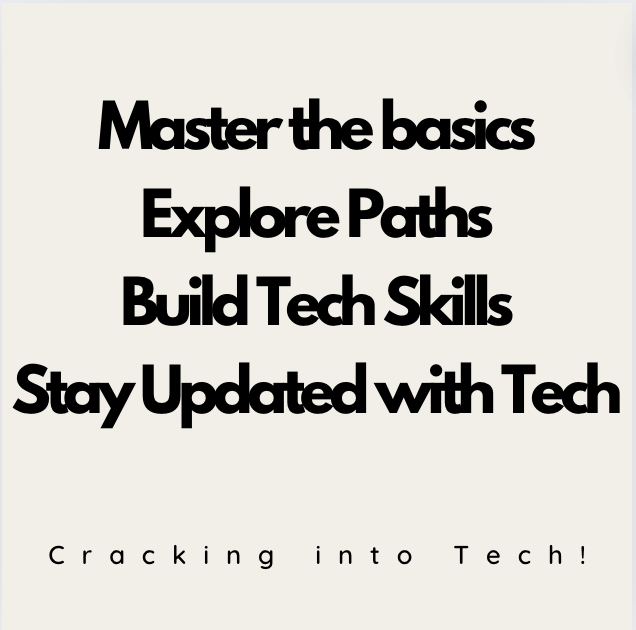
Lets elaborate on the above steps to help you get set and ready to spin off in tech.
WHY understanding this article makes sense
In today's rapidly evolving digital age, understanding technology fundamentals is essential for both personal and professional growth.
A strong foundation in technology empowers you to:
With a solid understanding of tech concepts, you can navigate the complexities of the digital world with ease.
Technology often requires creative problem-solving. A strong foundation equips you with the tools to tackle challenges effectively.
A solid grasp of technology can open up a wide range of career paths and opportunities.
Spark creativity and innovation, allowing you to contribute to technological advancements.
As technology continues to advance, staying updated with the latest trends and developments becomes crucial. A strong foundation in fundamentals provides a solid base for continuous learning.
In essence, mastering technology fundamentals is like building a strong house. A solid foundation ensures stability, resilience, and the ability to withstand the test of time.
For Beginners: | For Professionals: |
|---|---|
|
|
Choosing the Right Programming Language: A Beginner's Guide
When starting your journey into the world of programming, selecting the right language can significantly impact your learning experience and future career prospects. Here's a breakdown of three popular languages and their ideal use cases:
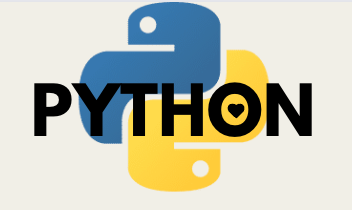
1. Python:
Strengths: Readability, versatility, and a vast ecosystem of libraries and frameworks.
Ideal for: Web development (Django, Flask), data science (NumPy, Pandas, Scikit-learn), machine learning, and automation.

2. JavaScript:
Strengths: Essential for web development, interactive elements, and front-end frameworks.
Ideal for: Building websites, web applications, and mobile apps using frameworks like React, Angular, or Vue.js.

3. Java:
Strengths: Robustness, scalability, and a vast community.
Ideal for: Enterprise applications, Android development, and big data processing.
Factors to Consider When Choosing a Language:
Your Goals: What do you want to achieve with your programming skills?
Project Requirements: Consider the specific needs of your projects.
Learning Style: Some languages may be easier to learn or more intuitive for you.
Community and Resources: Look for languages with a large and active community for support and resources.
Remember: The best way to decide is to try out different languages and see which one you enjoy the most. There's no one-size-fits-all answer, and you can always learn multiple languages as your career progresses.
Mastering Data Structures and Algorithms: A Beginner's Guide
Data structures and algorithms are fundamental concepts in computer science that form the backbone of efficient problem-solving and software development. Here's a roadmap to help you get started:
1. Understand the Basics:
Data Structures: Learn about common data structures like arrays, linked lists, stacks, queues, trees, graphs, and hash tables. Understand their characteristics, operations, and use cases.
Algorithms: Familiarize yourself with fundamental algorithms like sorting (bubble sort, insertion sort, merge sort, quick sort), searching (linear search, binary search), and graph traversal (DFS, BFS).
2. Practice with Coding Problems:
Use platforms like LeetCode, HackerRank, or Codeforces to practice coding problems and improve your problem-solving skills.
Begin with simpler problems and gradually increase the difficulty level.
Analyze different solutions to the same problem to understand different approaches and trade-offs.
3. Visualize Data Structures and Algorithms:
Use Diagrams: Create visualizations to understand how data structures are organized and how algorithms work.
Online Tools: Utilize tools like Visualgo or AlgoViz to visualize data structures and algorithms in action.
4. Learn Time and Space Complexity Analysis:
Big O Notation: Understand how to analyze the efficiency of algorithms using Big O notation.
Optimize Code: Identify bottlenecks and optimize your code for better performance.
5. Explore Real-World Applications:
Connect Theory to Practice: See how data structures and algorithms are used in real-world applications, such as web development, machine learning, and database systems.
Recommended Resources:
Books: "Cracking the Coding Interview" by Gayle Laakmann McDowell, "Introduction to Algorithms" by Cormen et al.
Online Courses: Coursera, edX, and Udemy offer courses on data structures and algorithms.
Coding Bootcamps: Consider attending a coding bootcamp for a more immersive learning experience.
Remember, practice makes perfect. The more you solve coding problems and experiment with different data structures and algorithms, the better you'll become.
Developing Your Problem-Solving Skills: A Beginner's Guide

Problem-solving is a crucial skill for anyone working in the tech industry. Here's how to develop your problem-solving abilities:
1. Break Down Problems:
Divide and Conquer: Break down complex problems into smaller, more manageable subproblems.
Identify Root Causes: Determine the underlying causes of the problem to find effective solutions.
2. Practice Algorithmic Thinking:
Learn Algorithms: Study common algorithms like sorting, searching, and graph traversal.
Solve Coding Problems: Practice solving coding problems on platforms like LeetCode, HackerRank, or Codeforces.
3. Develop Debugging Skills:
Use Debugging Tools: Utilize debugging tools in your IDE to step through code and identify errors.
Print Statements: Insert print statements strategically to track the flow of your program and identify issues.
Systematic Approach: Follow a systematic approach to debugging, starting with simple checks and gradually narrowing down the possibilities.
4. Seek Help and Collaborate:
Online Forums: Participate in online forums and communities to ask questions and get help from others.
Mentorship: Find a mentor who can provide guidance and support.
Collaborate with Peers: Work on projects with other developers to learn from each other and share ideas.
5. Cultivate a Growth Mindset:
Embrace Challenges: View challenges as opportunities for growth and learning.
Learn from Mistakes: Don't be afraid to make mistakes. Analyze them to improve your problem-solving skills.
Persist: Keep trying even when faced with difficult problems.
6. Practice Regularly:
Consistent Practice: Dedicate time to practicing problem-solving on a regular basis.
Variety: Solve a variety of problems to improve your versatility.
Remember, problem-solving is a skill that improves with practice. By consistently challenging yourself, you can develop the problem-solving abilities needed to excel in the tech industry.
Exploring Operating Systems and Networks: A Beginner's Guide
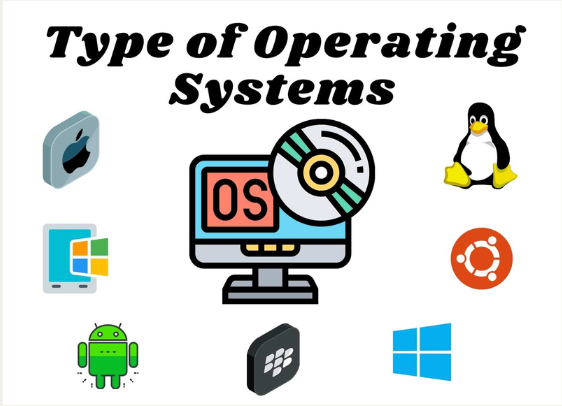
Operating Systems (OS):
Understand the Basics: Learn about the different types of operating systems (e.g., Windows, macOS, Linux) and their key functionalities.
Hands-On Experience: Experiment with different OSes to familiarize yourself with their interfaces, features, and capabilities.
Common Tasks: Learn how to perform basic tasks like managing files, installing software, and configuring settings.
Networking Fundamentals:
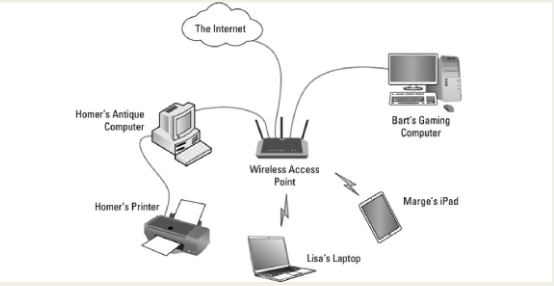
Network Components: Understand the components of a network, including routers, switches, and cables.
Network Protocols: Learn about common network protocols like TCP/IP, HTTP, and DNS.
Network Topologies: Familiarize yourself with different network topologies (e.g., star, bus, ring).
Network Security: Understand basic security concepts like firewalls, encryption, and VPNs.
Cloud Computing:
Cloud Providers: Learn about major cloud providers like AWS, Azure, and GCP.
Cloud Services: Understand the different types of cloud services (e.g., IaaS, PaaS, SaaS).
Cloud Deployment Models: Familiarize yourself with public, private, and hybrid cloud models.
Cloud Concepts: Learn about concepts like virtualization, scalability, and elasticity.
Helpful Resources:
Online Courses: Platforms like Coursera, edX, and Udemy offer courses on operating systems and networking.
Documentation: Refer to the official documentation for specific operating systems and cloud platforms.
Hands-On Labs: Practice using virtual machines or cloud-based environments to experiment with different operating systems and networking concepts.
Online Communities: Join forums and communities to ask questions and learn from others.
By exploring these topics, you'll gain a solid foundation in operating systems and networking, which are essential for understanding how computers communicate and interact with each other.
Diving into Databases: A Beginner's Guide
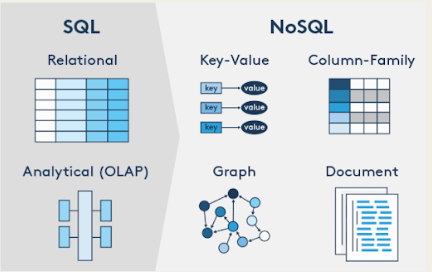
Understanding SQL Databases
SQL Fundamentals: Learn the basic SQL syntax for creating, selecting, updating, and deleting data.
Relational Database Concepts: Understand the concepts of tables, columns, rows, and relationships between them.
Database Design: Learn how to design efficient database schemas.
Popular SQL Databases: Explore popular SQL databases like MySQL, PostgreSQL, and SQL Server.
Exploring NoSQL Databases
NoSQL Data Models: Understand different NoSQL data models like document-oriented (MongoDB), key-value (Redis), graph (Neo4j), and wide-column (Cassandra).
Choosing the Right NoSQL Database: Consider your specific use case and data requirements to select the most suitable NoSQL database.
NoSQL Concepts: Learn about concepts like sharding, replication, and consistency in NoSQL databases.
Database Management Systems (DBMS):
DBMS Features: Understand the key features of DBMS, including data storage, retrieval, and management.
Popular DBMS: Explore popular DBMS options like MySQL, PostgreSQL, MongoDB, and Firebase.
Database Administration: Learn about database administration tasks, such as backup and recovery, performance tuning, and security.
Hands-On Practice:
Set Up a Database: Install a database management system on your local machine or use a cloud-based service.
Create Tables and Data: Practice creating tables, inserting data, and querying the database.
Join Tables: Learn how to join tables to retrieve data from multiple tables.
Normalization: Understand the concept of normalization and how to design normalized databases.
Helpful Resources:
Online Courses: Platforms like Coursera, edX, and Udemy offer courses on SQL and databases.
Tutorials: Websites like W3Schools and TutorialsPoint provide comprehensive tutorials on SQL and database concepts.
Practice Problems: Solve database-related problems on platforms like LeetCode or HackerRank.
By following these steps and actively practicing, you can develop a solid understanding of SQL and NoSQL databases, which are essential for many tech careers.
Building Your Web Development Skills: A Comprehensive Guide

Master the Fundamentals:
HTML (Hypertext Markup Language): Learn how to structure and organize content on web pages using HTML tags.
CSS (Cascading Style Sheets): Understand how to style web pages using CSS properties to control layout, colors, fonts, and more.
JavaScript: Master JavaScript for adding interactivity, handling user input, and manipulating the DOM (Document Object Model).
Explore Front-End Frameworks:
React: A popular JavaScript library for building user interfaces, known for its component-based architecture and virtual DOM.
Angular: A comprehensive JavaScript framework for building complex web applications, offering a wide range of features and tools.
Vue.js: A lightweight and flexible framework that is easy to learn and integrate into existing projects.
Dive into Back-End Development:
Node.js: A JavaScript runtime environment for building server-side applications, often used with frameworks like Express.js.
Python: A versatile language with popular web frameworks like Django and Flask.
Java: A robust language for enterprise-level web applications, often used with frameworks like Spring.
Staying Updated with the Latest Tech Trends
The tech industry is constantly evolving, making continuous learning, staying updated with the latest trends is crucial for both personal and professional growth. By actively pursuing skill enhancement, you can position yourself as a valuable asset in the tech industry and achieve your career goals.
Here are some effective strategies to keep your knowledge fresh:
1. Follow Tech News and Blogs:
Subscribe to Newsletters: Subscribe to newsletters from reputable tech publications like TechCrunch, The Verge, and Wired.
Follow Influencers: Follow tech influencers and experts on social media platforms like Twitter and LinkedIn.
Join Online Communities: Participate in online forums and discussion groups to engage with other tech enthusiasts.
2. Attend Conferences and Meetups:
Network with Peers: Connect with other professionals in the tech industry at conferences and meetups.
Learn from Experts: Attend talks and workshops by industry leaders to gain insights into the latest trends.
3. Experiment with New Technologies:
Try New Tools: Explore new programming languages, frameworks, and tools to stay ahead of the curve.
Build Projects: Apply your knowledge by building projects that incorporate the latest technologies.
4. Continuous Learning:
Online Courses: Take online courses on platforms like Coursera, edX, and Udemy to learn new skills.
Tutorials and Documentation: Refer to official documentation and tutorials for the latest technologies.
Coding Challenges: Participate in coding challenges and competitions to test your skills and learn from others.
5. Stay Curious:
Explore New Areas: Don't be afraid to venture into unfamiliar areas of technology.
Ask Questions: Don't hesitate to ask questions and seek clarification when needed.
Utilizing Resources Effectively: Your Tech Learning Toolkit
Online Courses:
Choose Reputable Platforms: Select platforms like Coursera, edX, and Udemy that offer high-quality courses from renowned institutions.
Consider Your Learning Style: Choose courses that align with your preferred learning style (e.g., video-based, project-based, or self-paced).
Utilize Interactive Features: Take advantage of quizzes, assignments, and discussion forums to reinforce your learning.
Tutorials and Documentation:
Start with Basics: Begin with beginner-level tutorials to grasp fundamental concepts.
Refer to Official Documentation: Consult the official documentation for the technologies you're learning.
Practice: Implement the concepts you learn through hands-on practice.
Coding Communities:
Ask Questions: Don't hesitate to ask questions on platforms like Stack Overflow.
Contribute: Participate in discussions and offer help to others.
Network: Connect with other developers to build relationships and learn from their experiences.
Mentorship:
Find a Mentor: Seek guidance from experienced developers who can offer advice and support.
Attend Meetups: Attend local tech meetups to connect with mentors and like-minded individuals.
Leverage Online Mentoring Platforms: Explore online platforms that connect mentees with experienced professionals.
Additional Tips:
Set Goals: Define clear learning objectives to stay focused and motivated.
Time Management: Create a study schedule and allocate time for practice.
Stay Consistent: Regular practice is key to mastering new skills.
Don't Be Afraid to Experiment: Try different approaches and learn from your mistakes..
Building Projects: A Hands-On Approach to Tech
Building projects is a crucial step in your tech journey. It allows you to apply your knowledge, gain practical experience, and showcase your skills. Here's how to get started:
1. Start Small and Build Gradually:
Begin with Simple Projects: Start with small, manageable projects to build your confidence and get a feel for the development process.
Break Down Tasks: Divide larger projects into smaller, more achievable subtasks.
2. Choose Projects That Interest You:
Find Your Passion: Select projects that align with your interests and hobbies. This will make the learning process more enjoyable and motivating.
Explore Different Domains: Experiment with various areas of technology, such as web development, data science, or mobile app development.
3. Share Your Work:
Create a Portfolio: Showcase your projects on platforms like GitHub, GitLab, or your personal website.
Join Online Communities: Share your projects with other developers on forums and social media.
Seek Feedback: Ask for feedback from others to get constructive criticism and improve your work.
Project Ideas:
Build a simple website: Create a personal website or a blog to showcase your skills.
Develop a mobile app: Create a mobile app for a specific purpose or to solve a problem.
Work on a data science project: Analyze a dataset and build a machine learning model.
Contribute to open-source projects: Collaborate with other developers on open-source projects.
Remember, the most important thing is to start building and have fun! The more projects you complete, the more confident and skilled you'll become.
Joining Tech Communities and Conferences: Expanding Your Network
Networking and collaboration are essential for growth in the tech industry. Attending tech meetups, conferences, and hackathons can provide valuable opportunities to connect with other developers, learn from experts, and gain new perspectives.
Finding Tech Communities and Conferences:
Online Platforms: Websites like Meetup, Eventbrite, and Lanyrd list upcoming tech events in your area.
Social Media: Follow tech influencers and organizations on platforms like Twitter and LinkedIn to stay updated on events.
Professional Associations: Join professional organizations like IEEE, ACM, or the Linux Foundation for networking and event information.
Preparing for Events:
Research Speakers and Topics: Identify sessions that align with your interests and prepare questions.
Network with Attendees: Be proactive in introducing yourself and engaging in conversations.
Exchange Contact Information: Collect business cards or connect on social media to maintain relationships.
Participating in Hackathons:
Form a Team: Collaborate with other participants to form a team.
Brainstorm Ideas: Come up with innovative project ideas that align with the hackathon theme.
Work Efficiently: Manage your time effectively and prioritize tasks to meet deadlines.
Learn from Others: Observe how other teams work and learn from their approaches.
Benefits of Networking and Collaboration:
Expanding Your Network: Connect with like-minded individuals and build relationships.
Learning from Experts: Gain insights from industry leaders and learn about the latest trends.
Finding Mentorship: Seek guidance from experienced professionals.
Collaborating on Projects: Work on projects with others to gain new perspectives and improve your skills.
Career Opportunities: Networking can lead to job opportunities and collaborations.
Remember: The key to successful networking is to be genuine, enthusiastic, and proactive. By actively participating in tech communities and conferences, you can expand your network, learn from others, and advance your career.
Staying Persistent: Overcoming Challenges in Your Tech Journey
Embracing Challenges:
View Challenges as Opportunities: Instead of getting discouraged by setbacks, see them as opportunities to learn and grow.
Maintain a Positive Mindset: Focus on your progress and celebrate small victories.
Visualize Success: Imagine yourself achieving your goals and let that motivation drive you forward.
Seeking Feedback:
Ask for Constructive Criticism: Request honest feedback from mentors, peers, or online communities.
Analyze Feedback: Carefully consider the feedback you receive and identify areas for improvement.
Implement Changes: Make necessary adjustments based on the feedback you receive.
Continuous Learning:
Stay Curious: Maintain a thirst for knowledge and explore new technologies and trends.
Set Learning Goals: Establish clear learning goals to stay focused and motivated.
Join Online Communities: Connect with other learners and experts to share knowledge and stay updated.
Additional Tips:
Break Down Goals: Divide large goals into smaller, achievable steps to avoid feeling overwhelmed.
Celebrate Milestones: Reward yourself for reaching significant milestones to stay motivated.
Find a Study Buddy: Collaborate with others to stay accountable and share the learning experience.
Take Breaks: Avoid burnout by taking regular breaks and practicing self-care.
Remember, persistence is key to success in the tech industry. By embracing challenges, seeking feedback, and continuously learning, you can overcome obstacles and achieve your goals.
Well, Lets Ready Set Go!!




Comments